 |
by Will Shanklin on (#6YR7R)
Meta said on Friday that it won't sign the European Union's new AI code of practice. The guidelines provide a framework for the EU's AI Act, which regulates companies operating in the European Union.The EU's code of practice is voluntary, so Meta was under no legal obligation to sign it. Yet Meta's Chief Global Affairs Officer, Joel Kaplan, made a point to publicly knock the guidelines on Friday. He described the code as "over-reach.""Europe is heading down the wrong path on AI," Kaplan posted in a statement. "We have carefully reviewed the European Commission's Code of Practice for general-purpose AI (GPAI) models and Meta won't be signing it. This Code introduces a number of legal uncertainties for model developers, as well as measures which go far beyond the scope of the AI Act."So, why kick up a (public) fuss about not signing something Meta was under no obligation to sign? Well, this isn't the first time the company has waged a PR battle against Europe's AI regulations. It previously called the AI Act "unpredictable," claiming "it goes too far" and is "hampering innovation and holding back developers." In February, Meta's public policy director said, "The net result of all of that is that products get delayed or get watered down and European citizens and consumers suffer."Outmuscling the EU may seem like a more attainable goal to Meta, given that it has an anti-regulation ally in the White House. In April, President Trump pressured the EU to abandon the AI Act. He described the rules as "a form of taxation."Mark Zuckerberg at Trump's inauguration in JanuaryPool via Getty ImagesThe EU published its code of practice on July 10. It includes tangible guidelines to help companies follow the AI Act. Among other things, the code bans companies from training AI on pirated materials and requires them to respect requests from writers and artists to omit their work from training data. It also requires developers to provide regularly updated documentation describing their AI features.Although signing the code of practice is voluntary, doing so has its perks. Agreeing to it can give companies more legal protection against future accusations of breaching the AI Act. Thomas Regnier, the European Commission's spokesperson for digital matters, added more color in a statement to Bloomberg. He said that AI providers who don't sign it "will have to demonstrate other means of compliance." As a consequence, they "may be exposed to more regulatory scrutiny."Companies that violate the AI Act can face hefty penalties. The European Commission can impose fines of up to seven percent of a company's annual sales. The penalties are a lower three percent for those developing advanced AI models.This article originally appeared on Engadget at https://www.engadget.com/ai/meta-says-it-wont-sign-the-eus-ai-code-of-practice-190132690.html?src=rss
|
 Engadget is a web magazine with obsessive daily coverage of everything new in gadgets and consumer electronics
Engadget is a web magazine with obsessive daily coverage of everything new in gadgets and consumer electronics
| Link | https://www.engadget.com/ |
| Feed | https://www.engadget.com/rss.xml |
| Copyright | copyright Yahoo 2025 |
| Updated | 2025-12-24 00:47 |
 |
by Lawrence Bonk on (#6YR7S)
Remedy has announced plans to fix FBC: Firebreak and restore the good will of consumers after a rough launch earlier this year. Many of the issues surrounding the launch were regarding the onboarding process, which the company acknowledges by saying that "many players come into the game and leave within the first hour."Remedy is trying to make that opening hour more welcoming to new players, so they don't "feel ineffective and confused as to what to do." It has already placed an introductory video in the game with a narrative to explain the world and how it relates to the developer's hit game Control, as FBC: Firebreak is set in the same universe. Remedy promises more of this type of "narrative onboarding" will come to the game later this year.It's building a playable tutorial level, as the developer acknowledges it needs "to do a better job" teaching new players the core mechanics and features. It's also taking a page out of Nintendo's playbook and introducing more "pop up" tips that will appear at "relevant times" throughout the first couple of hours.The forthcoming updates aren't just about onboarding. Remedy will be adding three new heavy guns to the arsenal and introducing a modding system for weapons. The company will share more about this system "before September." It's also introducing "big changes to the way" players access missions and beefing up the missions themselves.The developer says it's refining several elements to increase the fun factor, going on to say that it will be "weeding out our least fun experience" and "focusing on our best experiences." There will even be new game modes and missions down the line.Much of this is coming in the game's first major update, with a planned winter launch. For the uninitiated, FBC: Firebreak is a multiplayer FPS that places an emphasis on cooperative action. It's available on Game Pass and PlayStation Plus, so it could technically be "free" to check out any progress the dev has made since launch.This article originally appeared on Engadget at https://www.engadget.com/gaming/remedy-lays-out-its-plan-to-fix-fbc-firebreak-which-includes-improved-onboarding-182301518.html?src=rss
|
 |
by Matt Tate on (#6YR5E)
Microsoft has rather abruptly closed down its Movies & TV app, which is accessible on Xbox and Windows PCs via the Microsoft Store. This allowed people to rent or buy movies or TV shows natively through their console or computer's storefront, but in a newly updated support page Microsoft said the service has ended."Microsoft no longer offers new entertainment content for purchase, including movies and TV shows, on Microsoft.com, Microsoft Store on Windows, and the Microsoft Store on Xbox" the statement reads. "However, you can continue to access your purchased content in the Movies & TV app on Xbox or Windows device."Microsoft added that downloaded movies and shows will remain in your account and continue to play in their maximum supported resolution, but there's no way of moving your purchased content to another service. However, you can sign up for Movies Anywhere, a service that lets you register movies that you purchased on different storefronts and sync them to other ones so you aren't locked into one platform. According to the Microsoft support page, it's still possible to do this with your Movies & TV purchases if you're in the US.You can also continue to install other third-party video streaming and purchasing apps on both the Xbox and Windows stores, including Prime Video and Apple TV, and right now nothing is changing with those. The company does not offer refunds on previous purchases.Microsoft Movies & TV was first introduced as Xbox Video in 2012, which replaced the Zune Video Marketplace it had been operating since 2006. It was Microsoft's answer to the likes of Apple's iTunes Store and Amazon's various on-demand offerings. Microsoft also made a concerted effort to position the ill-fated Xbox One, which first launched in 2013, as an all-in-one multimedia box, but today's closure of the Movies & TV app is yet another sign that it has now completely moved on from that era.This article originally appeared on Engadget at https://www.engadget.com/entertainment/tv-movies/microsoft-unceremoniously-kills-off-the-xbox-movies-tv-store-171554115.html?src=rss
|
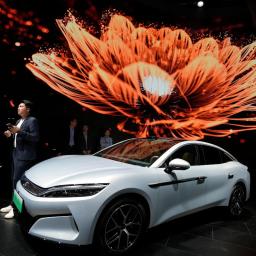 |
by Matt Tate on (#6YR2Q)
Chinese President Xi Jinping has bluntly questioned a nationwide rush of investment into the AI and EV industries. As deflation anxiety grows and Trump's trade war with China ramps up, the world's second largest economy is turning to fast-growth tech industries to remain competitive.But Xi appears to think that the strategy is flawed. As reported by the Financial Times, China's President sent out a pointed message about over-investment at the two-day Central Urban Work Conference in Beijing."When it comes to projects, there are a few things - artificial intelligence, computing power and new energy vehicles," he said in a speech that made the front page of the People's Daily, the official newspaper of the Communist Party. "Do all provinces in the country have to develop industries in these directions?"The Financial Times reports that Xi went on to criticise officials who encourage hasty development but don't hang around to face the consequences. We should not only focus on how much GDP has grown and how many major projects have been built, but also on how much debt is owed," Xi told conference attendees. "We should not let some people pass the buck and leave problems to future generations."For now though, there's no suggestion that China is shifting its focus away from the sectors Xi directly referenced. This week, NVIDIA was granted permission by the US government to resume selling its AI chips to China, with the company reportedly holding $8 billion in unshipped orders. It was initially blocked from selling the H20 AI GPU to China over concerns it could aid the nation's military.China is the global leader of the EV industry, and the country is taking on the US in the robotaxi race too. It was announced this week that Uber is partnering with Baidu to bring thousands of the Chinese company's Apollo Go autonomous vehicles onto the Uber network in mainland China and other non-US markets.This article originally appeared on Engadget at https://www.engadget.com/big-tech/xi-jinping-warns-against-chinas-overinvestment-in-evs-and-ai-154054773.html?src=rss
|
 |
by Devindra Hardawar on (#6YR2R)
Eliza McNitt is no stranger to new media. Her 2017 project, Fistful of Stars, was a fascinating look at stellar birth in virtual reality, while her follow-up Spheresexplored black holes and the death of stars. Now with her short film Ancestra, McNitt has tapped into Google's AI tools to tell a deeply personal story. Working with Google Deepmind and director Darren Aronofsky's studio Primordial Soup, McNitt used a combination of live-action footage and AI-generated media to tell the story of her own traumatic birth.The result is an uncanny dramatic short where the genuine emotion of the live-action performance wrestles agains the artificiality of AI imagery. The film begins when the lead's (Audrey Corsa, playing McNitt's mother) routine natal care appointment turns into an emergency delivery. From that point on we hear her opine on how her child and all living things in the universe are connected - evoking the poetic nature of Terrence Malick's films. We jump between Corsa's performance, AI footage and macro- and micro-photography. In the end, Corsa holds a baby that was inserted by Google's AI, using prompts that make it look like McNitt as an infant.There's no escaping the looming shadow of Google's AI ambitions. This isn't just an art film - it's an attempt at legitimizing the use of AI tools through McNitt's voice. That remains a problem when Google's models, including Veo and other technology from DeepMind, have been trained on pre-existing content and copyrighted works. A prestigious short coming from Darren Aronofsky's production studio isn't enough to erase that original sin."I was challenged to create an idea that could incorporate AI," McNitt said in an interview on the Engadget Podcast. "And so for me, I wanted to tell a really deeply personal story in a way that I had not been able to before... AI really offered this opportunity to access these worlds where a camera cannot go, from the cosmos to the inner world of being within the mother's womb."When it comes to justifying the use of AI tools, which at the moment can credibly be described as plagiaristic technology, McNitt says that's a decision every artist will have to make for themselves. In the case of Ancestra, she wanted to use AI to accomplish difficult work, like creating a computer generated infant that looked like her, based on photos taken by her father. She found that to be more ethical than bringing in a real newborn, and the results more convincing than a doll or something animated by a CG artist."I felt the use of AI was really important for this story, and I think it's up to every artist to decide how they wanna use these tools and define that," she said. "That was something else for me in this project where I had to define a really strong boundary where I did not want actors to be AI actors, [they] had to be humans with a soul. I do not feel that an performance can be recreated by a machine. I do deeply and strongly believe that humanity can only be captured through human beings. And so I do think it's really important to have humans at the center of the stories."To that end, McNitt also worked with dozens of artists create the sound, imagery and AI media in Ancestra. There's a worry that AI video tools will let anyone plug in a few prompts and build projects out of low-effort footage, but McNitt says she closely collaborated with a team of DeepMind engineers who crafted prompts and sifted through the results to find the footage she was looking for. (We ran out of time before I could ask her about the environmental concerns from using generative AI, but at this point we know it requires a significant amount of electricity and water. That includes demands for training models as well as running them in cloud.)"I do think, as [generative AI] evolves, it's the responsibility of companies to not be taking copyrighted materials and to respect artists and to set those boundaries, so that artists don't get taken advantage of," McNitt said, when asked about her thoughts on future AI models that compensate artists and aren't built on stolen copyrighted works. "I think that that's a really important part of our role as humans going forward. Because ultimately, These are human stories for other human beings. And so it's, you know, important that we are at the center of that."This article originally appeared on Engadget at https://www.engadget.com/ai/engadget-podcast-ancestra-director-eliza-mcnitt-defends-ai-as-a-creative-tool-150042942.html?src=rss
|
 |
by Igor Bonifacic on (#6YR2S)
DuckDuckGo is making it easier to wade through some of the AI slop that has taken over the internet in recent months. This week, the company introduced a new filter for removing AI-generated images from search results. The next time you use the browser, you'll see a new dropdown menu titled "AI images." From there, you can set whether you want to see AI content or not.
|
 |
by Kris Holt on (#6YQZY)
A Russian lawmaker who regulates the IT industry said WhatsApp should prepare to stop offering its services in the country. Anton Gorelkin, the deputy head of the lower house of parliament's IT committee, said that it's very likely that WhatsApp will be placed on a list of restricted software, as Reuters reports.WhatsApp owner Meta is designated as an extremist organisation in Russia, which has banned Facebook and Instagram since 2022. This week, President Vladimir Putin issued a directive for the nation to further restrict software (including communication apps) stemming from "unfriendly countries" that have sanctioned Russia, with a deadline of September 1. Gorelkin said WhatsApp will probably be one such service.In June, Putin signed a law to create a state-affiliated messaging app that will tie into government services as part of a long-standing effort to rely more on Russian services and less on foreign tech companies - some of which withdrew from the country or scaled down operations there after Russia invaded Ukraine in 2022. Gorelkin suggested that forcing WhatsApp to stop operating in Russia could help the state-backed app gain more market share.This article originally appeared on Engadget at https://www.engadget.com/big-tech/whatsapp-should-prepare-to-stop-operating-in-russia-official-says-140044721.html?src=rss
|
 |
by Matt Tate on (#6YPE0)
If you're on the market for a new pair of AirPods, you're in luck. The latest AirPods 4 are down to some of the best prices we've seen. You can pick up the standard AirPods 4 for $90, a 30-percent discount, or the AirPods 4 with ANC for $120, a 33 percent discount. While neither deal is quite as good as the ones we saw during the Prime day sale that just passed, you're only going to be an extra dollar down regardless of which model you go for. The non-ANC AirPods 4 were $89 for Prime Day (a record low), while the noise-cancelling buds could be snagged for $119. If you missed out then, these deals are virtually the same. You really can't go wrong with the AirPods 4. While the AirPods Pro 2 remain our number one pick for the entire product category, we think the former are the best choice if you're on a budget. Apple's regular" earbuds were given a long overdue spruce-up in 2024, offering the option of ANC on the non-Pro AirPods for the first time, as well as an improved design and better sound quality. Whether you go for the ANC or entry level model, you'll benefit from the various features afforded by the H2 audio chip. These include Voice Isolation, Personalized Spatial Audio with dynamic head tracking, Personalized Volume and Adaptive EQ. The AirPods 4 with ANC add Conversation Awareness, Adaptive Audio and a Transparency mode to the spec sheet. Downsides? You still can't change the volume using onboard controls, and the cheaper AirPods 4 don't come with a case that supports wireless charging via MagSage or Qi, which is a disappointment. The AirPods Pro 4 with ANC do a pretty good job of banishing low-frequency background noise, but the noise-canceling capabilities aren't quite as strong as what you get with the AirPods Pro 2. Check out our coverage of the best Apple deals for more discounts, and follow @EngadgetDeals on X for the latest tech deals and buying advice.This article originally appeared on Engadget at https://www.engadget.com/deals/apples-airpods-4-are-up-to-33-percent-off-right-now-141631725.html?src=rss
|
 |
by Mariella Moon on (#6YQZZ)
Nintendo has posted a call for participants for another Playtest Program, and this time, it's looking for 40,000 testers and not just 10,000 like in the first one. If you'll recall, Nintendo looked for 10,000 participants for the first Playtest event last year to test an unnamed, mysterious Switch Online feature. The new program still only welcomes active Nintendo Switch Online + Expansion Pack members, but as you'd expect, it now supports both the original Switch and the Switch 2.Interested participants must be at least 18 years old, and their Nintendo accounts must be registered in one of these regions: Japan, United States, United Kingdom, France, Germany, Italy, Spain, Canada, Brazil and Mexico. They can sign up individually or in groups of up to four people, whose data will be partially shared between each other. Nintendo will choose participants in Japan through a raffle and will accept testers from other regions on a first come first serve basis. The company will take applications from July 18 at 6PM Eastern until July 21 at 11AM Eastern time.While Nintendo didn't say what the participants will be doing, it noted in the announcement that it will be a "test of the same service" that was also tested in October 2024. The company has yet to formally announce that service, but previous participants had revealed that Nintendo had them play a Minecraft-like game that involves using blocks to build structures. Users could play with other people in the game's shared world if they want, which is probably why interested players can apply as a group.This article originally appeared on Engadget at https://www.engadget.com/gaming/nintendo/nintendo-launches-another-switch-online-test-program-for-40000-players-133053714.html?src=rss
|
 |
by Daniel Cooper on (#6YR01)
The minds behind Bo's sublime e-scooter met each other while working for the advanced engineering arm at (F1 team) Williams. Their mission was to take their knowledge of designing and building some of the world's fastest cars to build a better e-scooter. But while they no longer work for a Formula One team, they can't quite shake that desire to build vehicles that travel at preposterously daft speed. Which is why the company has today unveiled The Turbo, a souped-up version of the standard Bo e-scooter with a potential top speed of more than 100 miles per hour and a range of up to 150 miles.Bo MobilityThe Turbo (surely, the Tur...Bo, non?) is equipped with a 24,000W dual-motor engine, and a 1,800Wh battery. Naturally, given Bo's focus on safety and balance, the scooter has F1-style air intakes to keep both the electronics and brakes nicely cool. Given the scooter's light weight, Bo claims it has a higher power to weight ratio than a hypercar like the Bugatti Veyron. It's already been tested by former professional BMX rider Tre Whyte. Although he hasn't quite yet been able to breach the 100mph barrier the company thinks that isn't far off.Of course, the Turbo is one way to pull the world's eyeballs to a product, especially as it's announcing the US availability of its scooters. Customers in the US can now order a Bo M, with vehicles available at some point in August 2025. If you want the standard Bo M, with a range of 25 miles, will set you back $1,990 while the M2, with a range pushing 40 miles, will cost $2,490. And, if you're the sort of person who thinks that owning a scooter that can go at road car speeds is a good idea, you'll actually be able to buy a Turbo: It'll cost you at least $29,500, with the first delivery going to a collector in Madrid next year ahead of that city's inaugural grand prix.This article originally appeared on Engadget at https://www.engadget.com/transportation/this-is-the-daftest-e-scooter-in-the-world-131341641.html?src=rss
|
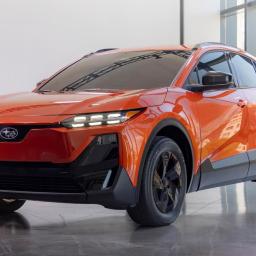 |
by Steve Dent on (#6YR02)
Subaru just screwed up our SEO with the launch of the Uncharted, an electric crossover with up to 300 miles of range that probably has nothing to do with the video game. It uses the same E-TNGA platform as Toyota's CH-R EV and strongly resembles that model.Due to arrive next year, the 2026 Uncharted will come in two versions, both with 74.7kWh batteries. The first is a front-wheel drive version with 228 horsepower and 300 miles of range, while the second is a much grunt-ier dual-motor four wheel drive version with 338 horsepower and a sub-five-second 0-60mph time in either Sport or GT trims, but slightly less range (290 miles). The latter specs are identical to the CH-R EV, by the way.SubaruThe Uncharted will come standard with a Tesla-style NACS charging port to give drivers Supercharger access. Fast charging speeds are limited to 150kW but Subaru claims it'll charge from 10-80 percent in under 30 minutes with the use of battery preconditioning.It's definitely a spitting image of the CH-R EV right down to the side cladding, though it has slightly different headlights and a restyled front end. Even the interior has a substantially similar center console that can wirelessly charge two phones plus the same 14-inch infotainment screen with Android Auto/CarPlay support. It has a generous complement of manual controls, unlike Tesla's EVs.SubaruSubaru hasn't released pricing yet for the 2026 Uncharted, but it might be similar to the CH-R EV which starts at $35,000. It's just the company's third electric vehicle, following the three-year-old Solterra and Outback-like Trailseeker, also set to arrive next year.This article originally appeared on Engadget at https://www.engadget.com/transportation/evs/subarus-third-ev-is-the-uncharted-yep-with-300-miles-of-range-and-338-horsepower-130015496.html?src=rss
|
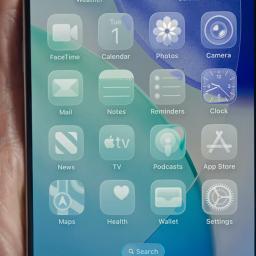 |
by Kris Holt on (#6YQXV)
Apple is suing leaker Jon Prosser and a codefendant for misappropriation of trade secrets related to YouTube videos from earlier this year that depicted mockups of iOS 26 (which was, at the time, expected to be called iOS 19). In the suit, which Apple filed at a district court in the Northern District of California, the company claims Prosser and Michael Ramacciotti "conspired to break into an Apple employee's development iPhone to take Apple's trade secrets."Per the filing, which was obtained by MacRumors, Prosser had promised to "find out a way for [Ramacciotti] to get payment" if his codefendant was able to access the development iPhone of his friend Ethan Lipnik, who worked on software designs at Apple. Apple claims Ramacciotti was staying with Lipnik and waited until he left for an extended period of time, using a location-tracking tool to make sure of that. Ramacciotti is said to have gained access to the iPhone and made a FaceTime call to Prosser to show features and designs from iOS 26.Prosser allegedly used a screen capturing tool to record the video call and then shared the footage with others in order to create mockups he used in his videos (Prosser has said that Apple uses identifiers in in-development versions of its software to help it pinpoint leakers, and recreating the renders is intended to protect them). One of those people who saw the footage is said to have recognized Lipnik's apartment and to have informed him of that.In January, Prosser published a video on his Front Page Tech YouTube channel depicting a render of an iOS 26 Camera app redesign that looked relatively close to the real deal. He later showed off mockups of the redesigned Messages app and the Liquid Glass design language Apple is switching to this year.Apple terminated Lipnik's employment for failing to protect confidential information. Per the suit, Lipnik said that Ramacciotti "often spent time at his home, sometimes staying for the weekend, and observing his patterns and security protocols for his devices." Apple says it discovered the alleged trade secret theft from an anonymous tip and that it also has a voice note that Ramacciotti sent to Lipnik to apologize and claim that Prosser was behind the scheme.The company claims the development iPhone in question hosted a "significant amount of additional Apple trade secret information that has not yet been publicly disclosed. It added that it does not know how much of this information Prosser and Ramacciotti obtained.Apple is seeking an injunction directing Prosser and Ramacciotti "not to make use of or disclose Apple's confidential, proprietary and trade secret information to third parties without its written consent" and to destroy any such material they possess. The company is also seeking damages and is requesting a jury trial.Prosser responded to the lawsuit on X, claiming that "This is not how things went down on my end. Looking forward to being able to speak to Apple about it." Prosser followed up by saying, "For the record: I certainly did not 'plot' to access anyone's phone and was unaware of the situation playing out."
|
 |
by Mariella Moon on (#6YQXW)
Rebecca Kelly Slaughter, one of the Democratic FTC Commissioners President Trump had fired back in March, said she looks forward to getting back to work. US District Judge Loren AliKhan has just ruled that her removal from the agency was "unlawful and without legal effect" and that she was still a "rightful member" of the commission. The judge explained that the firings violated protections that prevent a president from unilaterally removing officials at independent agencies.In her statement after the ruling was handed down, Slaughter said the "for-cause removal protections that apply to [her] colleagues and her at the FTC also protect other independent economic regulators like the SEC, the FDIC, and the Federal Reserve." Slaughter was one of the two Democratic members of the Federal Trade Commission that Trump had removed from their position, leaving only three Republican commissioners in charge.Historically, the FTC had five members: Three from the same party as the president and two from the opposite party. At the moment, FTC's website only lists the three current Republican commissioners, including Chairman Andrew Ferguson. The chairman previously said that he had "no doubts about [Trump's] constitutional authority to remove Commissioners, which is necessary to ensure democratic accountability for [the] government." The other fired Democratic commissioner, Alvaro Bedoya, was originally part of the lawsuit. However, his claims had been dismissed since he resigned from the agency completely and took on a private-sector job since then, explaining that he couldn't afford to have no income while the case was in court.White House spokesperson Kush Desai told The New York Times that the administration would appeal AliKhan's decision. "The Supreme Court has repeatedly upheld the president's constitutional authority to fire and remove executive officers who exercise his authority," he added. The judge expected as such and noted in her ruling that the case would likely reach the Supreme Court. As Politico has noted, the Supreme Court previously refused to reinstate the members of the National Labor Relations Board and the Merit Systems Protection Board that Trump had fired. Those personnel were also supposed to be protected by the federal law the restricts the president's ability to remove government agency officials.This article originally appeared on Engadget at https://www.engadget.com/big-tech/trumps-firing-of-democratic-ftc-commissioner-was-unlawful-judge-rules-120029367.html?src=rss
|
 |
by Mat Smith on (#6YQXX)
What can you expect from Google's Made By Pixel event? Well, according to the media invite we got (brag), it's promising new Pixel phones, watches, buds and more.Last year, that was true. The same event gave us the Pixel 9, Pixel 9 Pro, Pixel 9 Pro XL, Pixel 9 Pro Fold, Pixel Watch 3 and Pixel Buds Pro 2. I think that was everything?As for that and more" part, recent rumors suggest Google is working on Pixelsnap, a proper response to Apple's MagSafe tech. Android phones have been slow to adopt the Qi2 wireless charging standard - I mean, check out all of Samsung's recent phones. But... wireless charging? I hope Google has something more exciting planned.- Mat SmithGet Engadget's newsletter delivered direct to your inbox. Subscribe right here!The news you might have missed
|
 |
by Ian Carlos Campbell on (#6YQKM)
Vimeo, the business-focused video sharing and hosting platform, is bringing back its Apple TV app after ending support for all of its TV apps in 2023. While the company hasn't been trying to be a YouTube competitor for a while, TV apps were always more convenient than Vimeo's proposed solution of casting video from a smartphone or tablet.The rebuilt Vimeo Apple TV app lets you access Vimeo's curated library of Staff Picks, your personal library of uploaded videos and anything you've saved to your watchlist to watch later. Vimeo also says the app supports "enhanced playback with chapters, speed controls, and multi-language options." The app is available to download and try now, provided your Apple TV is running tvOS 18 or later and you have a Free Vimeo account.Vimeo originally pivoted away from being a direct YouTube competitor in 2017, several years before it dropped support for its apps. Since then the company has styled itself as more of a enterprise service, providing a way for businesses and professional creatives to host and sell videos, and even build their own streaming services.Spinning up a new TV app doesn't necessarily mean Vimeo is changing strategies, but if you've got some student films hanging out in an old Vimeo account, you now have a much easier way to watch them at home.This article originally appeared on Engadget at https://www.engadget.com/apps/it-only-took-two-years-for-vimeo-to-realize-deleting-all-of-its-tv-apps-was-dumb-212724092.html?src=rss
|
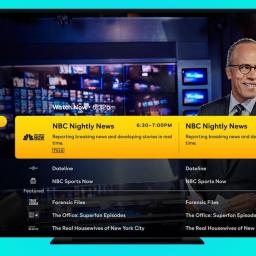 |
by Ian Carlos Campbell on (#6YQGX)
Peacock, NBCUniversal's streaming home for The Office and Love Island USA, is going to cost a good bit more starting on July 23, Variety reports. The streaming service's two existing tiers will cost an additional $3 per month, and Peacock will also start testing a cheaper $7.99 "Select" tier that includes access to NBC and Bravo shows and a limited number of titles from the NBCUniversal back catalog.With the new price hike, Peacock's ad-supported "Premium" plan will go from costing $8 per month to $11 per month, and the "Premium Plus" plan, which features fewer ads, will go from costing $14 per month to $17 per month. The discounted annual subscription for the Premium plan is now $110 per year, while the Premium Plus plan is $170 per year. The updated subscription fees will go into affect for new and returning customers on July 23, and on August 22 for current customers.While these fees are still on the low end of the $25-per-month that Netflix charges for its most premium tier, this is the third time Peacock has raised prices in the last three years. The streaming service's cheapest plan went from $5 to $6 per month in 2023, and then from $6 to $8 per month in 2024. At this rate Peacock subscriptions will cost an additional $4 in 2026.Peacock hasn't achieved the same level of critical acclaim as competitors like HBO Max or Netflix, but the timing of its price hike does follow a recent hot streak. The most recent season of Love Island USA, which streams exclusively on Peacock, was hugely popular. Nielsen rated the show as "the No. 1 most-watched streaming reality series" multiple weeks in a row in June, according to NBCUniversal, and the show became Peacock's "most-watched entertainment series on mobile devices, with nearly 30 percent of viewership happening on phones and tablets."Testing out the new Peacock Select plan seems like a further attempt to capitalize on that reality TV-focused audience. If you're interested in Bravo and whatever shows are exclusive to Peacock, you can pay $8 and get a huge library of episodes to watch.This article originally appeared on Engadget at https://www.engadget.com/entertainment/streaming/like-clockwork-peacock-is-raising-subscription-prices-again-203644730.html?src=rss
|
 |
by Will Shanklin on (#6YQGY)
Add this to the list of "things that might be fun if you had a buttload of money": Someone forked over $5.3 million in a Sotheby's auction to own a piece of Mars. The Red Planet meteorite was discovered in 2023 in a remote area of the Sahara Desert in Niger.Martian meteorites of any size are incredibly rare. To get here, an asteroid first hits the Red Planet to eject material from its surface. (Sotheby's says there are only 19 Martian craters large enough to have spit out this one.) That chunk then has to travel 140 million miles through space to reach Earth. Only 400 of the 77,000+ officially recognized meteorites hail from Mars.The meteorite is known as NWA 16788. Its reddish-brown, scarred exterior almost looks like the Red Planet's surface in miniature.Sotheby'sThis is also an exceptionally big Martian meteorite. It's about 70 percent larger than the second-biggest piece of Mars found on Earth. It measures 14.75 x 11 x 6 inches and weighs over 54 lbs. It's big enough to represent about 6.5 percent of all known Martian material on our planet.The winning bid was for $4.3 million. After fees, that comes out to over $5.3 million, making it the most valuable meteorite ever sold.Before bidding, the auction house sent a small piece of the space rock to a lab, which confirmed its distinctly Martian chemical composition. Over 21 percent of the rock is composed of maskelynite, a glass produced when the asteroid struck the Martian surface.This article originally appeared on Engadget at https://www.engadget.com/science/space/someone-paid-53-million-for-a-piece-of-mars-191502853.html?src=rss
|
 |
by Anna Washenko on (#6YQE2)
Google has filed a lawsuit against the operators of a what is believed to be the largest smart TV botnet in the world - BadBox 2.0.The company said in its complaint that this China-based botnet had compromised more than 10 million uncertified devices - including TV streaming boxes, tablets and projectors. Google said that cybercriminals pre-installed malware or used malicious apps to download malware on hardware that was running open-source Android software. These compromised devices were then used to conduct "large-scale ad fraud and other digital crimes." In addition to the lawsuit, which is an injunction against the botnet's operators as well as unspecified damages, Google said it has updated Google Play Protect to automatically block known apps associated with BadBox 2.0.The FBI is also working to dismantle BadBox 2.0, with an alert about the operation issued last month. The original BadBox botnet campaign, which also primarily infiltrated Android operating systems, was identified in 2023 and disrupted in 2024.Google has been a target for this type of cybercriminal activity before. In 2021, it disrupted Glupteba, which at the time was one of the largest botnets with about one million Windows PCs impacted.Read the full complaint below:This article originally appeared on Engadget at https://www.engadget.com/cybersecurity/google-is-suing-the-badbox-20-botnet-group-185812719.html?src=rss
|
 |
by Anna Washenko on (#6YPR9)
Google is continuing to double down on its AI Mode, bringing more features to its dedicated Search chatbot. Today, the company is adding the Gemini 2.5 Pro model and the Deep Search capability to AI Mode. These features will be available to Google AI Pro and Google AI Ultra subscribers. Although both of these tools can still be accessed through other means, Google's move to incorporate them into the chatbot points to an end goal of AI Mode being the primary form of engagement with the company's signature search service.These developments are follow-ups to announcements made during Google's I/O conference this spring. AI Mode began rolling out to all Google users in May, and Deep Think was also announced as an option for the Gemini 2.5 Pro model at that time.Outside of AI Mode, Search is also getting a small update. Another AI tool teased at I/O was the ability for Gemini to place phone calls with Project Astra. This agentic option is coming, albeit in a limited form. For starters, it will only be able to contact local businesses and its topics will be limited to inquiring about availability and pricing. When a person searches for companies or services, they may see an option such as "Have AI check prices" that will initiate a call to that business. These AI phone calls are rolling out today to all Search users, but Google AI Pro and AI Ultra subscribers will have higher limits.Update, July 17 2025, 2:10PM ET: This story has been updated to clarify that the phone calling feature is coming to Search, not AI Mode.This article originally appeared on Engadget at https://www.engadget.com/ai/google-expands-ai-mode-with-extra-features-for-search-205252812.html?src=rss
|
 |
by Lawrence Bonk on (#6YQE4)
There's finally a full trailer for Tron: Ares, the third installment in the decades-long sci-fi franchise. This comes after a teaser dropped a few months back and over two years after the film was first announced.The new footage is pretty cool, and gets into the meat of this threequel. It's a riff on AI and big tech, as corporate entities look to weaponize the digital creations of The Grid and bring them to the real world. This does not go well, as evidenced by shots of iconic franchise Recognizer ships careening down city streets.It also features Jeff Bridges, returning as computer programmer Kevin Flynn. Bridges is the only actor who will have appeared in all three Tron films. The star of this new one, however, is the scandal-plagued Jared Leto, who plays a soldier from The Grid who has traveled to the real world on some kind of mission. Hasan Minhaj, Gillian Anderson, Greta Lee and Evan Peters are also in the movie.Tron: Ares is directed by Joachim Ronning, who is something of a Disney hired gun. He made Pirates of the Caribbean: Dead Men Tell No Tales and Maleficent: Mistress of Evil, among other films for the company.I really have no idea what to make of this movie, even if the footage looks pretty nifty. I love the original and like the sequel well enough. One thing I'm happy about is the continued dedication to atmosphere-soaked soundtracks. The first film featured an iconic score by Wendy Carlos and the folks behind Tron: Legacy hired Daft Punk to make the music. The new movie includes a soundtrack by Nine Inch Nails. The band released the first single today, likely to coincide with the trailer, and it definitely nails the vibe.We don't have that long to wait for this one. Tron: Ares opens in theaters on October 10.This article originally appeared on Engadget at https://www.engadget.com/entertainment/tv-movies/the-official-tron-ares-trailer-riffs-on-big-tech-and-features-a-returning-jeff-bridges-181232528.html?src=rss
|
 |
by Igor Bonifacic on (#6YQE5)
After five years of development, one of Steam's coziest games is leaving Steam early access and making the jump to consoles. Starting today, you can purchase The Wandering Village on PC, Nintendo Switch and PlayStation 5. On Steam, the game's developer, Stray Fawn Studio, is offering a 35 percent discount until July 31. In the US, that means you can get the game for just under $20. Switch owners, meanwhile, can get a 10 percent launch discount until August 7.I've been playing The Wandering Village on and off since it entered early access in 2022. It's a lovely game that combines two very different influences. Most obviously, the game wears on its sleeve Stray Fawn's love of Hayao Miyazaki's seminal Nausicaa of the Valley of the Wind. The manga and later film is set in a desolate, post-apocalyptic world ravaged by nuclear war.The Wandering Village's other major influence are the titles of Impressions Games. In the late '90s and early 2000s, the now-defunct studio went on a hot streak releasing three games - Caesar III, Pharaoh and Zeus: Master of Olympus - that, to this day, define much of the city-building genre.The Wandering Village marries those influences in a novel way. Rather than building your city on solid ground, you build it on the back of a giant creature called the Onbu. As you can probably guess, the Onbu doesn't stay still. And while there are ways you can influence its behavior, sometimes it can have a mind of its own. All of that leads to some interesting gameplay interactions. For example, the Onbu might wander into a biome that is toxic to your villagers. As of the writing of this article, the game has a "very positive" rating on Steam on nearly 6,000 reviews, with recent reviews tilting toward "overwhelming positive."If you want to grab a physical copy of the game for Switch or PS5, Stray Fawn has partnered with Serenity Forge to offer collectors and premium editions of the game. Pre-orders will ship early next year. Despite the game leaving early access, Stray Fawn has promised to keep working The Wandering Village.This article originally appeared on Engadget at https://www.engadget.com/gaming/one-of-my-favorite-steam-early-access-games-is-now-available-on-switch-and-ps5-174539016.html?src=rss
|
 |
by Matt Tate on (#6YQB4)
It's likely that you predominantly associate Spotify with music and podcasts, but if you're a Premium member, you also get 15 hours of audiobook access per month. For some members, though, that clearly isn't enough, as Spotify has introduced a new add-on subscription that doubles that listening time.Audiobooks+ was first trialled in Ireland and Canada, and is launching initially for Premium Individual and Plan members in a number of countries in Europe, as well as Australia and New Zealand. Once you've added it to your existing subscription, you'll get an additional 15 hours of listening to audiobooks included in Spotify's catalog, on top of what's already included in the base plan. For individuals, Spotify Premium on its own costs $12 per month.For those on Premium Family ($20 per month) or Duo ($17 per month) plans, the plan manager has to purchase the add-on, and they're also able to buy a one-time top-up of 10 hours if they run out before their entitlement resets each month.Spotify does already offer an Audiobooks Access plan to customers in the US only, which is separate from the Premium offering and also includes access to music and podcasts with ads.Pricing for Audiobooks+ varies by market, but will cost 9 per month in the UK (around $12), where an individual Premium plan costs 12 (about $16). We'll find out what it costs here when it arrives in the US, which Spotify told Engadget will happen in the "coming weeks".This article originally appeared on Engadget at https://www.engadget.com/entertainment/spotifys-audiobooks-add-on-is-now-available-to-some-premium-subscribers-165030551.html?src=rss
|
 |
by Daniel Cooper on (#6YQB5)
Amazon's decarbonization goals are being undermined by its push to be a leader in generative AI. Its most recent sustainability report concedes its overall carbon emissions grew for the first time since 2022. It reported a six percent increase in its carbon footprint across 2024, laying much of the blame at the feet of its data center rollout.The reported increase is significant given Amazon's method of reporting its own environmental impact. Critics have suggested the mega-retailer dramatically undercounts" its impact by excluding common metrics. In 2022, Amazon revised its climate reporting methodology which also led to the company's figures falling dramatically.In addition, the company reported an increase in emissions tied to the purchase of power from outside sources. The increased energy demand is from AI chips," says the report, which require more electricity and cooling than traditional chips." As well as the power to run and cool those chips, Amazon is building big to increase its server capacity. Data center construction, as well as fuel use by logistics contractors, led indirect emissions to increase by six percent. That said, the company's own fossil fuel emissions increased by seven percent in 2024, which is hardly a ringing endorsement.Amazon is a co-founder of The Climate Pledge, an initiative to reach net zero emissions by 2040. The initiative now has 549 signatories, including MasterCard, Sony and Snap.inc.In February, Amazon CEO Andy Jassy pledged to invest $100 billion across 2025, with CNBC reporting the bulk of that cash would be spent on Amazon Web Services (the company's data center and web hosting arm). Given the increase in construction, it's likely Amazon's report for 2025 will follow this same upward trend.This article originally appeared on Engadget at https://www.engadget.com/general/amazons-ai-push-is-undermining-its-sustainability-goals-160156136.html?src=rss
|
 |
by Lawrence Bonk on (#6YQB6)
Meta CEO Mark Zuckerberg, along with a group of current and former company directors and officers, just agreed to settle to end a trial that sought $8 billion in damages, according to a report by Reuters. Zuckerberg and the others will actually be paying out to Meta shareholders as a recompense for damages allegedly caused by allowing repeated violations of Facebook users' privacy.The parties have not disclosed the details of the settlement, but one would assume the payout was less than the $8 billion the plaintiffs originally asked for. Judge Kathaleen McCormick adjourned the trial just as it was set to enter its second day and well before any of the major players were forced to take the stand.Billionaire venture capitalist Marc Andreessen, who is a defendant in the trial and a Meta director, was scheduled to testify today. Zuckerberg and former COO Sheryl Sandberg were set to take the stand next week. Former board member Peter Thiel was also expected to testify.Shareholders sued Zuckerberg, Andreessen, Sandberg and others to hold them liable for the billions of dollars in fines and legal costs the company has been forced to pay out in recent years as part of alleged privacy violations. For instance, the FTC fined Facebook $5 billion in 2019 after finding it failed to comply with a 2012 agreement to protect user data.Company shareholders wanted the 11 defendants to use their personal wealth to reimburse the company. Plaintiffs alleged in the suit that the defendants failed to oversee FTC compliance and that they knowingly ran Facebook as an illegal data harvesting operation. The defendants denied the allegations, calling them "extreme claims", before settling.This all goes back to the infamous Cambridge Analytica bombshell, in which the political consulting firm accessed data from millions of Facebook users as part of Donald Trump's successful 2016 presidential campaign. That led to the FTC fine, which was the largest ever issued at the time. Cambridge Analytica has since shuttered.Several people had already taken the stand before both parties reached a settlement. An expert witness for the plaintiffs testified about "gaps and weaknesses" in Facebook's privacy policies.This is just one pending case against the company. There's a big antitrust case that once again pits the FTC against Meta, alleging that the company participated in anticompetitive practices by purchasing one-time rivals Instagram and Whatsapp. The trial has ended but no decision has been reached.Zuckerberg has been implicated in a case that alleges Meta knowingly used pirated materials to train its Llama AI. The company is also paying $25 million to settle a lawsuit with Donald Trump over his 2021 Facebook suspension, after Trump threatened Zuckerberg with retribution during the 2024 election. The current president was temporarily suspended from the platform after inciting a riot at the capitol that left several people dead.This article originally appeared on Engadget at https://www.engadget.com/big-tech/mark-zuckerberg-and-other-meta-bigwigs-just-agreed-to-a-settlement-in-8-billion-suit-154513933.html?src=rss
|
 |
by Will Shanklin on (#6YQ7N)
Hollywood video game adaptations continue to have a moment. Following the success of HBO's The Last of Us and Amazon's Fallout, Netflix has officially greenlit an Assassin's Creed series. The news comes nearly five years after the company signed a deal with Ubisoft to adapt the franchise.Two Emmy nominees will helm the series. Roberto Patino (DMZ, Westworld, Sons of Anarchy) and David Wiener (Halo, Homecoming, The Killing) will serve as showrunners and executive producers. No casting has been announced yet."We've been fans of Assassin's Creed since its release in 2007," Patino and Wiener wrote in a statement. "Every day we work on this show, we come away excited and humbled by the possibilities that Assassin's Creed opens to us."UbisoftThe pair says the series will focus on "people searching for purpose, struggling with questions of identity and destiny and faith." (But it'll also include plenty of parkour and spectacle.) Above all else, it will be about "human connection across cultures and time."Netflix hasn't said when the show will premiere. So, we're probably still a ways off.This article originally appeared on Engadget at https://www.engadget.com/entertainment/streaming/netflix-takes-a-leap-of-faith-on-an-assassins-creed-series-153958591.html?src=rss
|
 |
by Igor Bonifacic on (#6YQ7P)
"This is probably the most uncertain future NASA has faced, maybe since the end of Apollo," Casey Dreier tells me over the phone. Dreier is the chief of space policy at The Planetary Society, a nonprofit that advocates for the exploration and study of space.On July 10, the Senate Appropriations Committee met to discuss the proposed federal Commerce, Justice and Science budget for 2026. While on average, funding for NASA has accounted for about 0.3 percent of total yearly spending by the federal government since the start of the 2010s, President Trump has called for a 24 percent cut year over year to the agency's operating allowance. By any metric, his plan would be devastating.Adjusted for inflation, it would leave NASA with the smallest operating budget it has had since Russian cosmonaut Yuri Gagarin became the first human to travel to space in 1961. In the process, it would eviscerate the agency's science budget by nearly half, resulting in the termination of 55 ongoing and or planned missions. It would also leave NASA with its smallest workforce in 70 years. All this, at a time when the agency has been tasked with returning to the Moon and bringing the first humans to Mars."There's no historical precedent to this level of single year, functionally indiscriminate and dramatic cuts. You lose, in one year, a third of all active science projects. [The Trump administration is] proposing to turn off missions that are performing not just good science, but unique and irreplaceable science. This isn't so they can reinvest the money in some radical new science efforts. No, the money is gone," said Dreier. "It's almost certainly the greatest threat to NASA science activities in the history of the space agency."Dreier isn't exaggerating when he says some missions would be impossible to replace. One of the casualties of Trump's cuts would be the New Horizons probe. In 2015, New Horizons gave us our best look at Pluto ever. Four years later, it performed the farthest flyby in human history. As things stand, it's the only active spacecraft in the Kuiper belt, a region of our solar system that is not well-understood by scientists. Even if NASA were to start working on a replacement today, it would take a generation for that vehicle to reach where New Horizons is right now. It costs NASA about $14.7 million per year to continue operating the probe, a fraction of the $29.9 billion in additional funding Congress allocated to fund ICE enforcement and detainment operations in the president's recently passed tax bill.Heather RoperAnother mission that would be impossible to replace is OSIRIS-APEX. If the name sounds familiar, it's because OSRIS-APEX is a continuation of NASA's incredibly successful OSRIS-REx flight. In 2020, the spacecraft visited 101955 Bennu, an ancient asteroid about the size of the Empire State Building, and collected a sample of regolith (rocks and dirt) from its surface using a never-before-tried technique.After OSRIS-REx successfully returned the sample to Earth, NASA decided to extend the spacecraft's mission and fly to another asteroid, 99942 Apophis. In 2029, Apophis will pass about 19,600 miles from Earth. It will be the closest approach of any known asteroid of its size. NASA said the extension would add $200 million to a mission that had already cost it an estimated $1.16 billion."This project is a pennies on the dollar repurposing of an existing spacecraft. It's the only American spacecraft that will be at Apophis for a once in a generation opportunity to study an asteroid that will just barely miss us," said Dreier. "That seems important to know."At a time when nearly every facet of American life is being upturned, the potential cancellation of dozens of NASA missions might seem a distant concern, but the gutting of the agency's science budget would have a ripple effect on communities across the US."NASA is an engine for jobs in the country, and for every NASA job, there are many more that are created in the private workforce," said Bethany Ehlmann, Professor of Planetary Science at the California Institute of Technology. She also serves on the board of directors for The Planetary Society.Professor Ehlmann's claim is supported by NASA's own data. In 2023, the agency employed 17,823 full-time civil servants nationwide. With NASA's private sector support factored in, that year the agency's missions were responsible for sustaining 304,803 jobs across all 50 states and the District of Columbia. Put another way, for every full-time equivalent job at a NASA facility, NASA supports at least 16 private sector jobs. "Space science has been broadly supported and impacts roughly three quarters of every congressional district in the country," said Dreier. "It's not just a red or blue state thing."Following last week's Senate meeting, policymakers from both parties said they would push back on President Trump's NASA budget cuts. On Tuesday, the House Appropriations Committee's Subcommittee on Commerce, Justice, Science and Related Agencies passed a funding bill that would provide NASA with a total budget of $24.8 billion for 2026, or the same amount it was allocated this year. The week before, the corresponding subcommittee in the Senate passed its own NASA funding bill.The two versions differ on one critical detail. The Senate legislation maintains the agency's science budget at $7.3 billion, while the House version seeks to reduce it by 18 percent to $6 billion. Separately, the House is calling for a 23 percent cut to the National Science Foundation's budget. NSF funds much of the nation's astronomy research."What I'm hearing from lawmakers is that they understand how important NASA is to industry. They understand how important NASA is to universities in terms of training, and providing grants that train the next generation of the space workforce," said Professor Ehlmann, who was on Capitol Hill last week. The House and Senate will need to come to an agreement for the bill to move forward.Even with many lawmakers in favor of maintaining NASA's budget, a flat budget is still a funding cut when accounting for inflation. Moreover, NASA has already been negatively affected by the Trump administration's efforts to trim the federal workforce.According to reporting Politico published on July 9, 2,694 NASA employees have agreed to leave the agency through either early retirement, a buyout or a deferred resignation. Of those individuals, 2,145 are workers in senior positions and 1,818 are staff serving in missions areas like human spaceflight and science. "Once the workforce is gone, they're gone. You lose a ton of institutional knowledge," said Dreier. The employees who have agreed to leave represent about 15 percent of NASA's 2023 workforce of 17,823. With the July 25 deadline for early retirement, voluntary separation and deferred resignations quickly approaching, that number is likely to grow. NASA's shifting priorities under the Trump administration have also created uncertainty among the agency's contractors.According to former NASA employee and NASA Watch creator Keith Cowing the workforce cuts are already affecting employees. "In the 40 years I've been involved with NASA in one way or another, I've never seen morale so bad," he said. "Is NASA bloated? Yeah, but the way you deal with bloat is to go in with a scalpel and you cut carefully. And yet you have people [like Elon Musk] standing on stage with chainsaws. That is not the way to run government, and it's certainly not the way to create the machinery needed to explore the universe."Whatever happens next, Dreier worries there's the potential for there to be an erosion in public support for NASA. He points to a survey published by Pew Research. In 2023, the organization found that monitoring for asteroids that could hit Earth and tracking changes to the planet's climate were the two activities Americans wanted NASA to prioritize over other mandates. By contrast, sending human astronauts to the Moon and Mars were the least important priorities for the public.REUTERS / ReutersThe House version of NASA's 2026 budget would boost the agency's exploration budget by 25 percent to $9.7 billion. In Trump's tax bill, Senator Ted Cruz (R-TX) included language that provided NASA with $4.1 billion for the fourth and fifth flights of the Space Launch System (SLS) rocket - the vehicle intended to carry the first NASA astronauts back to the Moon before before private sector alternatives like SpaceX's Starship are ready to fly.With both the Trump administration and House pushing Moon and Mars missions as priorities, Dreier says they're "ironically doubling down on the activities that the private sector is already doing - SpaceX says it's going to send humans to Mars - and abandoning the things that only NASA does. There's no private sector company doing space science."In effect, a NASA budget that sacrifices on scientific research in lieu of Mars missions would be one that invests in things the public says are the least important to it."I worry that they're moving away from what the public expects their space agency to do, and that as a consequence, it will undermine public investment in NASA," he said. "NASA is usually tied for the number one or two most popular federal agency. People wear NASA t-shirts. No one wears a Department of the Interior t-shirt walking out of the GAP. It's a rare and precious thing to have, and they're risking it. It's not just the future of the agency that's at risk, but the future of the public's relationship with it."When asked for comment on this story, Bethany Stevens, NASA's press secretary, pointed Engadget to a letter from Acting Administrator Janet Petro NASA shared in a technical supplement it published alongside the president's budget request."We must continue to be responsible stewards of taxpayer dollars. That means making strategic decisions - including scaling back or discontinuing ineffective efforts not aligned with our Moon and Mars exploration priorities" Petro wrote.The final NASA budget for 2026 is still months away from being finalized. After Tuesday's vote, the two funding bills will move to the full Senate and House appropriations committees for a vote and further revisions. Only after that will every member of each chamber get a chance to vote on the matter. Congress has until September 30 to complete the appropriations process before 2025 funding runs out. President Trump could also decide to veto the bill if it doesn't align with his priorities.Have a tip for Igor? You can reach him by email, on Bluesky or send a message to @Kodachrome.72 to chat confidentially on Signal.This article originally appeared on Engadget at https://www.engadget.com/science/space/trumps-defunding-of-nasa-would-be-catastrophic-153053020.html?src=rss
|
 |
by Matt Tate on (#6YQ7Q)
Uber is investing hundreds of millions of dollars in Nuro and Lucid, the latest step in the company's plan to build an extensive robotaxi program that can roll out globally. Uber's partnership with EV manufacturer Lucid will see it deploy at least 20,000 of the Newark-based company's vehicles over a period of six years. These will be equipped with the AI-powered Nuro Driver autonomous technology. The vehicles will be owned and operated by Uber or one of its third-party partners, and the service will be exclusive to Uber users.The robotaxi service is expected to launch in late 2026 in an unnamed "major US city," and Uber said that a prototype of an operational autonomous Lucid-Nuro vehicle is currently being tested on a closed circuit at a Nuro facility in Las Vegas. According to the new partners, the robotaxi will benefit from the Lucid Gravity SUV's "advanced technology platform, redundant electrical and controls architectures, and long range," with the latter estimated to be around 450 miles.Nuro will be responsible for overseeing the extensive safety checks. These range from simulations to on-road testing and are marked on "dozens" of categories. The approved Lucid Gravity robotaxi will operate at level 4 autonomy, which essentially makes it almost fully self-driving and able to perform the majority of its functions without any human intervention.Uber has spent much of this year expanding its robotaxi ambitions through various team-ups with the likes of Volkswagen and British AI company Wayve, with whom it plans to bring robotaxis to the UK for the first time next year. Back in March, Uber launched its robotaxi service with Waymo in Austin, building on the existing offering in Phoenix, Los Angeles and San Francisco. Waymo One covers 37 square miles of the city, and Uber users can ride in one by ordering an UberX, Uber Green, Uber Comfort or Uber Comfort Electric.Earlier this week, Uber also announced a new partnership with China-based Baidu, which will see the two companies bring Baidu's Apollo Go autonomous vehicles to mainland China and other non-US (no surprise there) markets around the world.This article originally appeared on Engadget at https://www.engadget.com/transportation/evs/ubers-latest-robotaxi-plan-involves-20000-lucid-evs-145943920.html?src=rss
|
 |
by Kris Holt on (#6YQ7R)
Jack Dorsey has been back in the news lately after unveiling a pair of new apps he worked on, Bluetooth-based messenager Bitchat and UV exposure tracker Sun Day. The Block CEO put those together under the auspices of a new development collective called "and Other Stuff," a nonprofit that he is backing with a $10 million cash injection through his StartSmall foundation, as TechCrunch reports.The group plans to work on open-source projects, including ones that could become consumer social media apps, along with app-development tools. The developers met on Nostr, a social networking protocol Dorsey has also backed financially.The "and Other Stuff" collective aims to support Nostr's "transition from an experimental protocol to a widely adopted, sustainable ecosystem through collaborative growth and funding." In addition to Nostr projects, the collaborators plan to experiment with building tools based on the likes of ActivityPub - which powers Mastodon - and Cashu. That e-cash platform's creator, dubbed Calle, is part of the "and other Stuff" team alongside Twitter's first employee, Evan Henshaw-Plath.The projects that "and Other Stuff" has worked on so far include voice note app heynow, a private messenger app called White Noise and social community +chorus. They have also created Shakespeare, which is designed to help developers build Nostr-based social apps with AI.Dorsey has long fostered an interest in open-source protocols. In 2019, during his second stint as Twitter CEO, the company set up a team that was tasked with forming an open, decentralized standard for social media. Dorsey had hoped to eventually shift Twitter onto that protocol, but of course that didn't pan out. Instead, Twitter spun out that project - Bluesky - as a public benefit corporation in 2022. Last year, after leaving Bluesky's board, Dorsey claimed that the team there was "literally repeating all the mistakes" he made while running Twitter such as, uh, setting up moderation tools (which are, in reality, a critically important aspect of any successful social platform).On an episode of Henshaw-Plath's new podcast, Dorsey reiterated a point he had made previously, that Twitter was beholden to advertisers (an issue that X is contending with under Elon Musk's ownership). "It's hard for something like [Twitter] to be a company, because you have corporate incentives when it wants to be a protocol," Dorsey said. "If [Twitter] were an open protocol, if it were truly an open project, you could build a business on top of it, and you could build a very healthy business on top of it."He was also once again critical of Bluesky's structure, adding that, "I want to push the energy in a different direction... which is more like Bitcoin, which is completely open and not owned by anyone from a protocol layer. That's what I see in Nostr as well. That's where I want to push my energy... rather into the more corporate direction, even if it is a public benefit corporation."This article originally appeared on Engadget at https://www.engadget.com/social-media/jack-dorsey-backs-an-open-source-development-collective-with-10-million-140052825.html?src=rss
|
 |
by Ian Carlos Campbell,Kris Holt on (#6YPNE)
Virtuos, the studio that developed The Elder Scrolls 4: Oblivion Remastered, is laying off seven percent of its staff, or around 270 employees. Gauthier Andres, a reporter and co-founder at Origami, was first to report the news, which the studio later confirmed. Virtuos has provided support on a number of large game projects - including a recent patch for Cyberpunk 2077 - and employs more than 4,200 people across the US, Europe and Asia.The company said the layoffs are primarily affecting "teams facing lower occupancy and slower demand due to structural shifts in the industry." It's firing around 200 people in Asia and approximately 70 in Europe. "Fewer than 10" of those are in France, where the core team working on Oblivion Remastered is based. Virtuos says it's offering affected workers layoff packages, career transition assistance and, "where possible," job opportunities across its network."Over the past 12 months, Virtuos has deepened its commitment to premium co-development through key acquisitions of Beyond-FX, Pipeworks, and Umanaia in North America, as well as Third Kind Games and Abstraction in Europe," Virtuos said in a statement. "These studios enhance our strengths in VFX, design, Unreal Engine programming and creative development. This ongoing investment reflects our intent to grow in areas where our expertise and scale create lasting value, while selectively exiting service segments where demand is weakening. We need to better match the locations of our teams with those of our clients to support the increasingly iterative nature of creative co-development. This alignment is why the current reorganization has a greater impact on our teams in Asia."Besides reviving Bethesda classics, Virtuos has contributed work to the upcoming Metal Gear Solid Delta: Snake Eaterand several ongoing live service games, like Dune: Awakening and Sea of Thieves. Nothing about the company's output or the critical reception of its games would suggest it needs to conduct layoffs, but that reflects the current precarious state of the games industry. Even having theoretically steady work doing post-release support and game remasters isn't enough.Virtuos' layoffs follows the sweeping cuts Microsoft made to its Xbox division in early July. Microsoft reportedly cancelled games, like Rare's long-in-development Everwild, and shutdown whole studios, like The Initiative. Romero Games, which had an unannounced funding deal with Microsoft, was also forced to cancel its current project, though it hopes to find a new publishing partner.Update July 17, 2025, 9:57AM ET: Added confirmation of the layoffs from Virtuos.This article originally appeared on Engadget at https://www.engadget.com/gaming/virtuos-the-studio-behind-oblivion-remastered-is-laying-off-around-270-employees-135722222.html?src=rss
|
 |
by Daniel Cooper on (#6YQ5K)
Stellantis, the automotive giant behind Chrysler, Citroen, Fiat, Jeep and Peugeot, is pulling out of hydrogen. The company said it's killing its fuel cell development program in the face of limited availability of hydrogen refueling infrastructure, high capital requirements and the need for stronger consumer purchasing incentives." To put that another way, it's realized hydrogen EVs are facing the same set of challenges it's not been able to overcome in the last two or three decades.It's a stark shift in tone from January 2024, when the company promised to roll out a fleet of commercial fuel cell vehicles. Stellantis sells many of Europe's most popular panel vans including the Citroen Jumper, Fiat Ducato, Opel Movano and Peugeot Boxer. Back then, it said we'd see hydrogen versions of all those vehicles (as well as its smaller siblings) with maximum ranges of 500km (310 miles).The decision to pull the plug came relatively late, with the company saying it was due to begin production at its plants in France and Poland this summer." It added the decision to kill the range will not impact staffing in production or R&D, with employees transferred to other projects. It will, however, have to delicately negotiate its exit with Symbio, the fuel cell maker it bought a one-third share of back in 2023.Stellantis isn't the first company that pledged to put its weight behind fuel cells only to pull back. Toyota has thrown a lot of time, effort and money behind hydrogen, believing fuel cells would be preferable to battery electric vehicles (BEVs). Sadly, as time progressed, the company has had to cede more and more of the market to batteries, and only advertises its third-generation fuel cell as a power unit for heavy industrial vehicles.Hydrogen was, and has been for some time, an article of faith for fossil fuel companies, the car industry and even some countries that lack their own energy reserves. After all, the promise of being able to pull (theoretically limitless), emission-free energy out of water is the stuff of dreams. Not to mention, it requires much of the same knowledge and infrastructure used by the traditional oil and gas industry, and refueling can only take place at a commercial site.Had hydrogen made more of an impact, it would have likely preserved the status quo or something much like it, for those industries long into the future. But while the hope was that hydrogen could be a cleaner, greener substitute for oil and gas, its inherent flaws always made that a non-starter.For instance, hydrogen is far less energy dense than oil and gas, and far less physically dense - it's so prone to leaking that you have to go above and beyond to seal it in. It's difficult to mass produce cleanly, especially if you want to power every car in the world, unless you use a dirty process like the steam reformation of methane. So, rather than moving away from fossil fuels and emissions, you'd be further entrenching them into the system and adding to the problem.And if you did want to just use renewable energy to pull hydrogen from water, then you'd require an unprecedented amount of investment. Back in 2021, I asked Tim Lord, who had previously been in charge of the UK's decarbonization strategy, about that sort of industrial-scale hydrogen generation. He said that you'd essentially need to double your whole electricity generation output to get close.That's before you get to the other factors, like hydrogen's efficiency as a store of energy or the investment necessary to equip every gas station on the planet with a hydrogen tank. Which is not likely going to pay off given that Toyota's Mirai, arguably the flagship hydrogen fuel cell EV, has only sold 28,000 models since its launch in 2014. In the US market, there's only the Mirai, the Hyundai Nexo and the Honda CR-V e-FCEV knocking around, nothing compared to how many BEVs are on sale. I think it's time for everyone to admit that we're done with hydrogen fuel cell EVs and focus their attention elsewhere.This article originally appeared on Engadget at https://www.engadget.com/transportation/another-big-car-company-gives-up-on-hydrogen-133011978.html?src=rss
|
 |
by Steve Dent on (#6YQ5M)
TikTok has proven to be a powerful platform to help tunes go viral and now the company is making it easier for songwriters to benefit from that reach. The social media site has rolled out a pair of new features in beta: a Songwriter label that identifies users as such under their profile, and a Songwriter Music Tab that lets them spotlight tracks they've written or co-written.So far, only a limited number of publishers and songwriters can apply to get the new label and tab. TikTok noted that several established songwriters including Lauren Christy (Avril Lavigne, Britney Spears), Toby Gad (Fergie, John Legend) and Justin Tranter (Dua Lipa, Ariana Grande) are among the first to gain access. Others who want to join can put their names on a waitlist.TikTok and its parent ByteDance developed the Songwriter Features after surveying 871 songwriters and doing 18 in-depth interviews. Those findings informed the design of the feature with the aim of improving discovery and monetization opportunities while raising songwriters' profiles on TikTok. The platform noted that 53 percent of full-time songwriters who post content on social media do so on TikTok.When it comes to royalties and copyright, TikTok has taken a similar tack to YouTube and other social media sites. All the music available on TikTok can be used in videos and the platform has deals in place with distributors and labels to license music. Artists then receive royalties whenever creators use their music on TikTok, the amount of which depends on the individual distributor.TikTok is following belatedly in the heels of Spotify, which has offered a similar songwriter spotlight feature since 2020. Last month, ByteDance introduced the TikTok for Artists music insight platform designed to help musicians gain access to "data and insights about their music, posts and followers."This article originally appeared on Engadget at https://www.engadget.com/social-media/tiktoks-latest-feature-will-help-songwriters-show-off-their-work-131512204.html?src=rss
|
 |
by Igor Bonifacic on (#6YQ5N)
Since rolling out the redesign of its Firefly app in April, Adobe has been releasing major updates for the generative AI hub at a near monthly clip. Today, the company is introducing a handful of new features to assist those who use Firefly's video capabilities.To start, Adobe is making it easier to add sound effects to AI-generated clips. Right now, the majority of video models create footage without any accompanying audio. Adobe is addressing this with a nifty little feature that allows users to first describe the sound effect they want to generate and then record themselves making it. The second part isn't so Adobe's model can mimic the sound. Rather, it's so the system can get a better idea of the intensity and timing the user wants from the effect.In the demo Adobe showed me, one of the company's employees used the feature to add the sound of a zipper being unzipped. They made a "zzzztttt" sound, which Adobe's model faithfully used to reproduce the effect at the intended volume. The translation was less convincing when the employee used the tool to add the sound of footsteps on concrete, though if you're using the feature for ideation as Adobe intended, that may not matter. When adding sound effects, there's a timeline editor along the bottom of the interface to make it easy to time the audio properly.AdobeThe other new features Adobe is adding today are called Composition Reference, Keyframe Cropping and Video Presets. The first of those allows you to upload a video or image you captured to guide the generation process. In combination with Video Presets, you can define the style of the final output. Some of the options Adobe is offering at launch allow you to create clips with anime, black and white or vector art styles. Lastly, with Keyframe Cropping you can upload the first and final frame of a video and select an aspect ratio. Firefly will then generate a video that stays within your desired format.In June, Adobe added support for additional third-party models, and this month it's doing the same. Most notable is the inclusion of Veo 3, which Google premiered at its I/O 2025 conference in May. At the moment, Veo 3 is one of the only AI models that can generate video with sound. Like with all the other partner models Adobe offers in Firefly, Google has agreed not to use data from Adobe users for training future models. Every image and video people create through Firefly is digitally signed with the model that was used to create it. That is one of the safeguards Adobe includes so that Firefly customers don't accidentally ship an asset that infringes on copyrighted material.According to Zeke Koch, vice president of product management for Adobe Firefly, users can expect the fast pace of updates to continue. "We're relentlessly shipping stuff almost as quickly as we can," he said. Koch adds Adobe will continue to integrate more third-party models, as long as their providers agree to the company's data privacy terms.This article originally appeared on Engadget at https://www.engadget.com/ai/adobe-firefly-can-now-generate-sound-effects-from-your-audio-cues-130008172.html?src=rss
|
 |
by Sarah Fielding on (#6YNJP)
Whether you shopped during Prime Day last week or not, a few of the best deals are still around right now in case you missed anything. One of those is on our pick for best dual-zone air fryer: this Ninja Foodi air fryer is on sale for $160, which is 36 percent off its usual price. That's the same price it was on Prime Day proper and one of the best we've seen. It's a 10-quart model that includes a smart cook thermometer and six prep modes, including air fry, reheat and dehydrate. Plus, it warms up so quickly that you barely notice the preheat time. The Ninja DZ401 Foodi Air Fryer's biggest achievement: allowing you to cook two different foods in two different settings at the same time. It's not meant for small kitchens, but if you have a lot of counter space and a big family, then it's a great option. Follow @EngadgetDeals on X for the latest tech deals and buying advice.This article originally appeared on Engadget at https://www.engadget.com/deals/this-ninja-dual-zone-air-fryer-is-36-percent-off-right-now-142051313.html?src=rss
|
 |
by Mariella Moon on (#6YQ35)
Apple has rolled out the Emoji Game exclusively for its News+ subscribers in the US and Canada, just in time for World Emoji Day. While the company originally announced the game for iOS 26 at WWDC earlier this year, the Emoji Game is now available to subscribers on iPhone, iPad and Mac running iOS 18.4, iPadOS 18.4 and macOS 15.4 or later, respectively. The game is similar to other word games out there like Wordle in that players would have to fill in the blanks to guess words and phrases. But like its name implies, players will have to fill the blanked-out letters with emoji instead.If the letters for "apple" are missing in the word "pineapple," for instance, users would have to use the "apple" emoji to complete the word. For the phrase "the night is young," players can choose the baby emoji if it's the word "young" that's missing. In addition to standard emoji, the game also uses Genmoji, which are custom emoji created using Apple Intelligence. For each round of the game, players will have to complete three phrases. They can reveal the clues baked into the phrases if they want, but it will use up one of their moves, which are limited in number.News+ subscribers will be able to play the game in the Puzzles section of the Apple News app. Later this year, they'll be able to play it in the upcoming dedicated Apple Games app, as well. An Apple's News+ subscription costs $13 a month. It gives subscribers access to magazines and newspapers, audio stories and regional publications, along with daily puzzles like crosswords and sudoku.This article originally appeared on Engadget at https://www.engadget.com/mobile/apples-emoji-game-is-now-out-for-news-subscribers-in-the-us-and-canada-121505775.html?src=rss
|
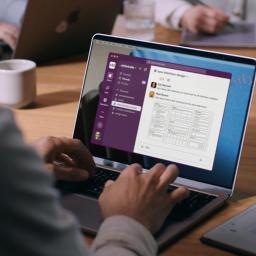 |
by Andre Revilla on (#6YQ36)
Slack, the cloudbased team messaging juggernaut, is charging ahead with further integration of AI into users' daytoday experience. The company is introducing a series of tools aimed at improving productivity and improving team communication.AI writing assistance has been built directly into Slack Canvas, allowing users to create assets like project briefs as well as refine the content they create using naturallanguage prompts. Writing assistance can also be used to generate and assign action items, refine raw meeting notes, create FAQs and more. AI writing assistance seems to be in vogue, as Google has also been developing AI writing assistance tools integrated into Google Workspace, and Apple offers similar tools via Apple Intelligence.SlackAI message context will help users understand the lingo of their organization and help ensure they don't get lost in long threads by pulling surrounding context to explain a message when a user hovers over it. This tool will provide explanations for project names, internal tools or teamspecific shorthand. This will presumably help new team members get up to speed more quickly while they learn whatever random acronyms their company uses. AIgenerated channel recaps and thread summaries will similarly help users catch up when joining an ongoing project or conversation.If you're heads down working on a highpriority task, Slack will use AI action items to understand what you're working on and only interrupt your workflow if something provides a meaningful update or is more important than what you're working on at the time.SlackThe company also said it will be widening the availability of AI translation, which allows teammates to read and contribute in their preferred language, as well as Enterprise Search, which surfaces information across connected apps, data and conversations from the likes of Salesforce, Microsoft Teams, Google Drive and more.SlackSlack has been rapidly incorporating AI tools into the platform recently. This should come as no surprise since Slack has been owned by Salesforce since 2021. The software company is among the most bullish on the future of AI and its applications in the workplace. We know that Slack has been using data from your chats to train its machinelearning models, and recently Salesforce moved to ensure that rival software firms were not using or accessing the same data.These tools and more are available to users with a paid Slack plan, though not every new AI tool is included at the lower price tiers. The higher the subscription tier, the more of these tools are included. Slack says that Enterprise Search, channel recaps, AI meeting notes and translations are available now. In contrast, AIassisted message explanations, action items, writing assistance in Canvas and profile summaries are coming soon and may be released throughout the year.This article originally appeared on Engadget at https://www.engadget.com/big-tech/slack-is-getting-a-host-of-new-ai-tools-120023607.html?src=rss
|
 |
by Kris Holt on (#6YQ37)
South Korea's top court has upheld an appeals court ruling to dismiss all charges in a long-running fraud case against Samsung chairman Jay Y. Lee. The accounting fraud and stock manipulation charges stemmed from a merger of two Samsung subsidiaries in 2015. Prosecutors had accused Lee of manipulating share prices to help clear the way for the merger in an attempt to consolidate his power.In 2024, a court ruled that the prosecutors failed to prove their claims. The case has worked through the appeals process since then. In a statement to Reuters, Samsung's lawyers said the latest ruling confirmed that the merger had been completed legally and added they were "sincerely grateful" to the Supreme Court.Back in 2017, Lee was sentenced to five years in prison after being convicted of bribing public officials with regards to the merger. However, the Supreme Court overturned the decision and ordered a re-trial. As a result of that, Lee was handed a 30-month prison sentence and served 18 months before being paroled. Then-South Korea President Yoon Suk Yeol (who was removed from office this year and recently rearrested over a failed martial law attempt in 2024) later pardoned Lee.While the Supreme Court's ruling had been widely expected, it clears "a layer of legal uncertainty" related to Samsung, one analyst said. It will allow Lee to focus more of his attention on Samsung, which earlier this month projected a 56 percent drop in operating profit for the April-June quarter compared with the same period in 2024. That is due, in large part, to sluggish sales of its AI chips.This article originally appeared on Engadget at https://www.engadget.com/big-tech/samsung-chairman-cleared-of-fraud-by-south-koreas-top-court-113043402.html?src=rss
|
 |
by Karissa Bell on (#6YQ38)
Roblox is joining the growing ranks of online platforms that are trying to better understand the ages of their teen users. The company is rolling out a new "age estimation" feature for teens 13 and older.With the update, teens will be prompted for an age check that requires a video selfie in order to access its new less restrictive chat feature called "trusted connections." Roblox is relying on third-party identity company Persona for the actual "estimation," and users who fail the check will also have the option of providing an ID. Once teens have "unlocked" trusted connections via video selfie or sharing an ID, they'll be able to participate in chats with friends "without filters," including "party" group text and voice chats.Roblox has previously faced scrutiny for not policing its chat features enough and making it too easy for adults to seek out children on the platform. The company notes in its announcement that parents will be able to monitor their kids' "trusted connections" via parental control features, and that the feature is intended only for people who teens already "know and trust." Teens are only able to add trusted connections via their existing contacts list or a QR code."We believe chat without filters should only be accessible to users who have verified their age." the company writes in a blog post. "This isn't just about compliance; it's about building engaging and appropriate digital spaces for everyone."While Roblox is notably not using the term "age verification," the new feature comes at a time when there are increasing calls for social media companies and other platforms to check the ages of their youngest users. Reddit and Bluesky recently announced age verification features for users in the UK - a change required of major platforms ahead of a new online safety law going into effect. Age verification mandates have also been gaining steam in the United States.A number of states have introduced age verification measures for social media, though laws in Arkansas and Utah have so far been blocked. Utah also recently passed a law requiring app stores to verify users' ages - an approach that has been endorsed by companies like Meta and Snap. And the Supreme Court recently upheld a Texas law that requires websites hosting adult to conduct age verification checks.Roblox, which unlike most online platforms allows children under 13 to have accounts, is in a slightly different position. And for now, it's billing its age checks as "optional." But already having an age estimation feature in place could certainly be useful should it be required to take an even stricter approach in the future.This article originally appeared on Engadget at https://www.engadget.com/gaming/roblox-is-adding-an-age-estimation-feature-for-teens-110047092.html?src=rss
|
 |
by Ian Carlos Campbell on (#6YPR8)
The Federal Communication Commission plans to vote on new rules that will ban the use of Chinese technology in undersea cables, according to a press release from FCC Chairman Brendan Carr. The proposed rules will apply to any company on the FCC's existing list of entities that pose "an unacceptable risk to the national security of the United States."Besides "prohibiting the use of 'covered' equipment," the FCC's new rules will also limit the ability for Chinese companies to receive a license to build or operate cables that connect to the US. Undersea or submarine cables are a key piece of internet infrastructure, and a potential site of foreign espionage in the eyes of the FCC. Banning, or at least severely limiting the influence of Chinese companies is an attempt to benefit American cable providers while hurting the country's perceived enemies.During President Donald Trump's first term, the FCC made similar moves to prevent mobile carriers from using Chinese equipment in the US. Trump signed a law that required carriers to "rip and replace" old Huawei and ZTE mobile infrastructure, and the FCC provisioned funding to make it happen. The new rules around undersea cables are being proposed by a very different commission, though.Currently, there are only three commissioners on the FCC, down from the typical five. Under Carr, the commission has taken a much more aggressive approach to regulating the telecommunications industry, bordering on violating the First Amendment. Carr has threatened to investigate companies for their diversity, equity and inclusion policies and committed to not approving any mergers of companies that insist on keeping them.The FCC is expected to vote on the new rules on August 7. Besides being consistent with past FCC actions, they could be justified as a way of securing American infrastructure following the widespread "Salt Typhoon" hack the affected US carriers and other companies last year.This article originally appeared on Engadget at https://www.engadget.com/big-tech/the-fcc-plans-to-ban-chinese-technology-in-undersea-cables-215207536.html?src=rss
|
 |
by Will Shanklin on (#6YPND)
On Tuesday, Nintendo published an interview with the creators of Donkey Kong Bananza. The second big Switch 2 tentpole title comes from the team that made Super Mario Odyssey. The developers explained how they laid the foundation for DK's first 3D adventure since the Nintendo 64 era.Destruction is at the heart of Donkey Kong Bananza. Everything in his environment can be smashed to bits. Not only is that a fun mechanic, but it also adds an element of verticality and freedom of exploration. That's an ideal fit for showcasing the Switch 2's processing power.NintendoAs with so many other Nintendo creations, the first step in getting there was a no-brainer. Consult with Shigeru Miyamoto."We'd built up a lot of expertise in gameplay development for 3D action games through our work on 3D Mario games, including Super Mario Odyssey," producer Kenta Motokura said. "But we needed to dive deeper into the fundamental question of 'What is Donkey Kong?' So, our first step was to seek out Miyamoto-san and Nintendo Executive Officer Yoshiaki Koizumi."In their talk, Miyamoto emphasized DK's moves like hand slaps and blowing. Along similar lines, Koizumi pointed to the ape's massive arms, which he uses to punch and hoist heavy objects. That got the team thinking. After all, who doesn't want to control a giant ape who runs around, breaking shit?DK slapping a platform in the 2010 game Donkey Kong Country Returns. Shigeru Miyamoto emphasized the move as a starting point for the new version.Nintendo / RetroThe Super Mario Odyssey team was uniquely suited to handle that challenge. First, the 2017 title included some light environmental destruction. (Think the cheese rocks in the Luncheon Kingdom and Bowser's smashing in the final level.)The team experimented with fully destructible environments soon after Odyssey's release. (That was long before they knew they'd make a Donkey Kong game.) That included the adorably strange idea of putting smashing fists on a Goomba and setting it loose. Part two of the interview includes a short video of one of these tests.On a technical level, the key to that mechanic is using voxels (3D pixels). "In Super Mario Odyssey, we started using voxels midway through development, so the areas where we could apply them were limited," Motukura said. "But the trial and error we went through back then directly led to what we were able to do in Donkey Kong Bananza."Another interesting tidbit from the interview is that they started working on the game as a Switch 1 title. "We originally began developing Donkey Kong Bananza on Nintendo Switch, but we ran into some challenges," Motokura said. "I think it was around 2021 when we started to think about moving development to Switch 2." In the comparison image below, you can see a much richer environment in the Switch 2 version.NintendoArt director Daisuke Watanabe explained that the new console's hardware opened new doors. "We first looked into how we could upgrade what we'd originally built for Switch to take advantage of Switch 2," Watanabe said. "One of the most obvious improvements was that we could place far more objects in the environment than before. Being able to place more objects in the terrain didn't just enhance the game's visual richness. More importantly, it increased the amount of things players could destroy, which amplified the exhilaration of being able to demolish anything and everything."There are many more nuggets in Nintendo's interview. This includes animal transformations and Pauline's role in the game. (She must be the forgiving type, given how they started.) The chat also explores how DK's modern art style evolved.You can visit Nintendo's website for the full lowdown. Donkey Kong Bananza will be available tomorrow, July 17.This article originally appeared on Engadget at https://www.engadget.com/gaming/nintendo/donkey-kong-bananzas-creators-reflect-on-the-games-path-to-delightful-destruction-201600462.html?src=rss
|
 |
by Ian Carlos Campbell on (#6YPNF)
Threads is testing letting you sign up with a Facebook account rather than an Instagram account. The new option, spotted by Social Media Today, doesn't appear to be widely available yet, but is already mentioned in a Meta support article.Besides making it easier for people who don't have an Instagram account to quickly create an account on Meta's X and Bluesky competitor, this new Facebook sign up option should influence the kind of posts and ads that get recommended to you."Signing up to Threads with your Facebook account helps unlock features that work across Threads and Facebook, like using the same login info to access both apps," Meta writes in a support article. "If you create a Threads profile with your Facebook account, we'll combine your info across Threads and Facebook."Encouraging users to build their Threads profile using the information and followers they had on Instagram was one of the ways Meta quickly grew its Threads user base. It hasn't always led to the best experience on Threads, though. As it turns out, growth-obsessed Instagram users produce fairly shallow text posts. And because most people's Instagram accounts are associated with their Threads profile, they get served a lot of that subpar engagement bait by default. If you came to Threads looking for the relative wit of X, you'd come away pretty disappointed.Letting you sign up with Facebook will likely have its own shortcomings (namely, modern Facebook is pretty spammy, too), but it at least acknowledges that what people want from Instagram is different from what they want from Threads.Meta has made a concerted effort as of late to establish Threads as more of an independent entity. Adam Mosseri, the head of Instagram at Meta, shared that the company planned to remove "the Instagram graph import from the onboarding flow" back in November 2024. Threads also started testing using its own separate direct messaging inbox in June, after relying on Instagram DMs since launch.This article originally appeared on Engadget at https://www.engadget.com/social-media/threads-is-testing-facebook-account-sign-ups-191214734.html?src=rss
|
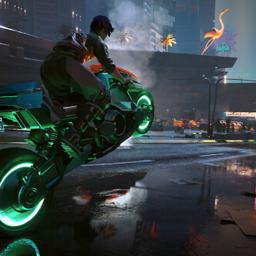 |
by Lawrence Bonk on (#6YPJP)
There's another big update for Cyberpunk 2077 coming our way. Update 2.3 brings some notable new features to PC and consoles. CD Projekt Red (CDPR) is adding official in-game support for VRR on PS5 and Xbox Series X/S. This should help with screen tearing when the frame rate drops and is of particular use when running the game in performance mode.There's also an official AutoDrive feature, which is something that has long-existed in the modding community. This is available in all cars and motorcycles and lets players drive from place to place automatically. Just set the destination marker and let the game do the rest. This isn't teleportation. The vehicle still drives, it does just so automatically.With AutoDrive enabled, players can turn on a "cinematic camera" to make the journey a bit more visually stimulating. There's even a new "wandering" mode for aimless joyrides, for those who just want to experience the splendor of Night City and its environs.Speaking of driving, the update also brings four additional vehicles to the game, and they all look to be attached to new side jobs. More content is always appreciated.PC players are getting support for AMD FSR 3.1, Intel XeSS 2.0 and HDR 10 Plus. AMD's FSR 4 is also being added, but it requires a specialized driver that isn't available yet. CDPR says it's coming at a "later date."The update drops on July 17, which is the same day the Cyberpunk 2077: Ultimate Edition comes to Mac computers. It looks like the Mac version will include these new features. Update 2.3 is coming to the Switch 2, but not just yet. Cyberpunk 2077 was a launch title for the recently-released console.This article originally appeared on Engadget at https://www.engadget.com/gaming/cyberpunk-2077s-latest-update-brings-vrr-to-consoles-and-introduces-an-autodrive-mode-181933646.html?src=rss
|
 |
by Igor Bonifacic on (#6YPGG)
Google will host its next Made by Google event on August 20, the company announced today. In a media invite, it promised the event would feature new Pixel phones, watches, buds "and more." It's hard to imagine what other product types might be covered by those last two words, but for those who watch the industry closely, this event is likely to see the launch of the Pixel 10 flagship phones, along with a Pixel Watch 4 and new Pixel Buds.It's easy to make that deduction, especially going by previous Made By Google events. At last year's hardware launch, Google announced the Pixel 9, Pixel 9 Pro, Pixel 9 Pro XL, Pixel 9 Pro Fold, Pixel Watch 3 and Pixel Buds Pro 2.Between that and the company's invite, we can expect a refresh of nearly the entire Pixel line. As for what the "and more" bit could entail, recent rumors suggesting Google is working on a proper response to Apple's MagSafe tech dubbed Pixelsnap. Android manufactures have been slow to adopt the Qi2 wireless charging standard, but with the upcoming Pixel 10 it appears the company is working on a host of magnetic Qi2 accessories, including a new charging stand. As always, be sure to visit Engadget on the day of the event as we'll have a liveblog of the entire proceedings.Update, July 16 2025, 1:50PM ET: This story has been updated to include a list of devices we expect Google to unveil on August 20.This article originally appeared on Engadget at https://www.engadget.com/mobile/smartphones/the-next-made-by-google-event-better-known-as-the-pixel-launch-is-set-for-august-20-162832319.html?src=rss
|
 |
by Will Shanklin on (#6YPGE)
If you were having trouble viewing Reddit today, you weren't alone. Downdetector showed a spike in outages and problems at the site. Reddit acknowledged the problem on Wednesday. At 12:38PM ET, it said the situation had been resolved.Reddit told Engadget that an update was the culprit. "An update we made caused some instability," a company spokesperson said. "We reverted and are seeing Reddit ramp back up." As to what that update was, we don't yet know, but it was probably a standard tweak to the site that just had some bugs on board.If you tried to visit Reddit this morning, you likely saw a message reading, "Server error: We have encountered an error. Please try again later." The company's system status page showed a "partial outage" for the desktop web, mobile web and mobile apps.DowndetectorMeanwhile, Downdetector's status page (above) showed a sharp upward trend in problems starting at around 11:20 AM ET. The graph dropped again after Reddit implemented its fix.This article originally appeared on Engadget at https://www.engadget.com/big-tech/reddit-is-back-online-after-a-brief-outage-161522867.html?src=rss
|
 |
by Lawrence Bonk on (#6YPGF)
Steam has added a new rule to its guidelines that has resulted in certain games getting banned, according to a report by Automaton. The new clause states that "content that may violate the rules and standards set forth by Steam's payment processors and related card networks and banks, or internet network providers" is not allowed and could result in removal from the platform.In other words, if credit card companies get mad about something, they could actually have the power to ban a game. The clause goes on to say that this will affect "certain kinds of adult-only content."This has likely already resulted in many games being pulled off the platform. The vast majority of these titles have obvious sexual themes and many have the word "incest" in the title. SteamDB doesn't give a reason for these removals, but the timing does match up.
|
 |
by Matt Tate on (#6YPGH)
If you're all caught up on The Last of Us (the TV version that is) then you'll know that season two made clear that when the show returns it will focus a lot more on Kaitlyn's Dever's Abby. But it sounds like we're going to have to wait a while to see that side of the story unfold.Speaking to Varietyoff the back of The Last of Us netting HBO 16 Emmy nominations this week, the company's CEO, Casey Bloys, said season three is "definitely planned for 2027." Bloys didn't offer any more specific information about the release window, but the next batch of episodes arriving in the first half of 2027 would be consistent with the roughly two-year gap between seasons one and two.The HBO Max chief also told Variety that a decision has yet to be made on whether the remaining chunk of narrative from The Last of Us Part II will be adapted into more than one additional season. Bloys said that the decision is being left to showrunner Craig Mazin. Mazin's decision likely won't involve input from Neil Druckmann, though. The Naughty Dog studio head and co-creator of the eponymous video game series stepped away from his role on the show after season two. But Bloys unsurprisingly doesn't think (publicly at least) that Druckmann's departure will affect the development of season three."It was fantastic to have Neil involved. A lot of people don't realize that Neil has a full time job creating video games and running Naughty Dog. It's a really big job that he's got. So I understand why he needs to focus on that," he told Variety. "But I believe he's given us a good blueprint with the show. And obviously Craig is a pro, so I think we'll be in excellent shape. I'm not worried at all."If you are looking for a way to bridge the gap between now and what could be the final season of The Last of Us, a replay of the game it's based on might be the way to go. Last week, Naughty Dog introduced a new Chronological Mode to the remastered version of the sequel that ditches the game's frequent flashback sequences to focus on Ellie and Abby's respective Seattle plotlines as they unfold.This article originally appeared on Engadget at https://www.engadget.com/entertainment/streaming/hbo-confirms-the-last-of-us-season-3-will-arrive-in-2027-161150871.html?src=rss
|
 |
by Nathan Ingraham on (#6YNFP)
Mac owners will soon be able to play one of the biggest games of the last five years or so. Cyberpunk 2077: Ultimate Edition will be available in the Mac App Store as well as Steam, GOG.com and the Epic Games Store on Thursday, July 17. As the name implies, it includes both the base game as well as the Phantom Liberty expansion from 2023. The port was announced last fall and was originally planned to arrive "early" this year, but it took a little longer to get everything squared away.Unsurprisingly, you'll need an M-series Mac to play this game, but Apple and CD Projekt Red confirm that it'll work on computers all the way back to the M1 - but you'll need 16GB of RAM. For years, 8GB was the standard on entry-level Macs, so those computers will be out of luck. And of course, graphics fidelity will vary widely across the various supported chipsets, but CD Projekt Red is including a "for this Mac" graphics preset that is optimized for each Apple Silicon-based Mac. So at the very least, you shouldn't have to fuss around with settings too much to get a decent experience.Shortly after the initial announcement, CD Projekt Red provided more details on the "for this Mac" setting as well as recommended specs. While the game does work with an M1 Mac, you're capped at 30fps and a low resolution - things escalate rapidly from there. The recommended configuration calls for an M3 Pro chip with 18GB of RAM to hit 60fps at 1080p. That configuration supports Ray Tracing, but regardless of what you're using you'll need to turn it on manually.CD Projekt RedThings go up from there, with 36GB of RAM and either an M2 Ultra or M3 Max chip to run high fidelity; very high fidelity requires an M3 Ultra or M4 Max. That essentially means you have a $2,000 or up Mac Studio or a $3,200 and up MacBook Pro with the M4 Max if you want to run this game at the highest of settings. Of course, if you care about such things, you probably already have a good gaming PC.As for other technical goodies, the game utilizes AMD FSR for upscaling and frame generation, and Apple's MetalFX also provides upscaling as well. Upcoming Metal 4 features announced at WWDC 2025, including Metal FX Frame Interpolation and Metal FX Denoising, are coming to the game via a future update. Metal FX Frame Interpolation generates an intermediate frame for every two input frames and can be combined with existing Metal upscaling to allow the game to hit 120fps on Ultra settings - but again, we're not sure what specific models will support that.If you use AirPods with your Mac, Cyberpunk 2077 features spatial audio with head-tracking features. And the game supports cross-progression regardless of what platform you play on, which should be useful for anyone who started a game elsewhere and wants to pick it back up on a Mac. If you've already purchased Cyberpunk 2077 from another storefront like Steam, it'll automatically be available for Mac.While Cyberpunk 2077 isn't exactly a new game, it remains one of the more popular and lauded titles of the decade (at least after CD Projekt Red fixed numerous launch bugs). And it joins a still small but growing number of major games optimized for Apple Silicon and the Mac, including the recently-released Assassin's Creed Shadows. A quick look on the Mac App Store also shows AAA releases including Death Stranding, Control, Lies of P, numerous Resident Evil titles as well as smaller but no less awesome games like Neva and Stray. Most big-name games don't come to the Mac at the same time as other platforms still, but the Mac is an option for more than just Apple Arcade games.Update, July 16, 2025, 11:44AM ET: This story has been updated with more details from the developer on the different specs required to hit the varying performance tiers in Cyberpunk 2077.This article originally appeared on Engadget at https://www.engadget.com/gaming/cyberpunk-2077-ultimate-edition-comes-to-the-mac-on-july-17-130047453.html?src=rss
|
 |
by Lawrence Bonk on (#6YPDY)
It's time to break out that 1980s playlist. The last season of the Netflix hit Stranger Things finally has a trailer. It's been nearly a decade since the show premiered and it looks like it's going out with a bang. This trailer is absolutely packed with action, showing many fan favorite characters in mortal peril of one kind or another.Season four ended with one heck of a cliffhanger so, of course, things pick up from there. The footage depicts all kinds of supernatural chaos impacting the small Indiana town. It's been three whole years since the last season, so here's a refresher from Netflix about the upcoming batch of episodes. It's filled with spoilers from previous seasons, so read at your own risk.
|
 |
by Andre Revilla on (#6YPDZ)
Google is bringing AIgenerated summaries to Discover, the personalized stream of articles and videos found in the Google app curated based on a user's interests. The search giant remains undeterred by the imperfect nature of AI Overviews, or what it might mean for publishers whose content largely makes up Google's search results.TechCrunch has reported that some Android and iOS users in the US are seeing cards containing AIgenerated summaries on their Discover page. These cards appear with news sites' logos in the top left of the card, with an accompanying snippet that is presumably generated from the body or headlines of those publishers' content. When users tap "see more," the card expands to show all the contributing articles for the summary. Each summary card carries a warning that it was generated by AI, which it notes "can make mistakes."A Google spokesperson told TechCrunch that this is a US launch of a new feature, not a test. The feature will first focus on trending lifestyle topics like sports and entertainment. In speaking with TechCrunch, Google claimed the summaries would make it easier for people to decide which pages they want to visit, though publishers are already vocal that Google's AI tools are tanking clickthrough traffic. Some estimates say as many as 64 percent of search results that include AI Overviews end without a click.Google has been aggressively rolling out AIpowered features. Tools like AI Overviews, AI mode in Search and AIgenerated video summary represent, in part, Google's determination to maintain its user base in the face of wouldbe searchengine replacements like ChatGPT.The pace of this new rollout was not made clear.This article originally appeared on Engadget at https://www.engadget.com/big-tech/google-adds-ai-generated-summaries-to-discover-144341141.html?src=rss
|
 |
by Sarah Fielding on (#6YMS6)
Budgeting can be a challenge, especially when you're trying to pay for the daily cost of life and save for things you want like a new gaming console or laptop. But there are plenty of tools out there that can make budgeting more manageable, and one of our favorite budgeting apps is on sale right now. You can subscribe to Quicken Simplifi for only $3 per month, which is half off its usual $6-per-month price. Notably, the sum is paid in one go for the year, instead of month to month. Yes, spending money to save money does sound a bit silly in principle, but Quicken Simplifi is our choice for best budget app overall. It offers a sleek, easy-to-use interface that doesn't have much of a learning curve. It's also excellent at tracking regular income and bills, along with refunds. Plus, you can share access to the app with your partner or financial advisor. There are a few cons, though nothing massive. You can't do a free trial - though Quicken does seem to have a 30 day cancelation policy to get a refund. You also can't create an account using your Apple or Google ID. Plus, there's no Zillow integration. Follow @EngadgetDeals on X for the latest tech deals and buying advice.This article originally appeared on Engadget at https://www.engadget.com/apps/our-favorite-budgeting-app-is-50-percent-off-right-now-141516676.html?src=rss
|
 |
by Kris Holt on (#6YP94)
Nintendo has revealed the two lead actors for its live-action The Legend of Zelda movie. Bo Bragason is playing the title character, Princess Zelda, while Benjamin Evan Ainsworth is taking on the role of Link, series creator Shigeru Miyamoto announced on X.The performers are around the right ages for their parts - Bragason was born in 2004 while Ainsworth is 16. These are by far the biggest roles to date for both actors, but they each have plenty of experience in front of cameras.Bragason has appeared in Disney+ fantasy series Renegade Nell and BBC crime drama The Jetty, as well as the very enjoyable horror movie Censor and Final Fantasy XV. As for Ainsworth, he voiced Pinocchio in Disney's 2022 live-action remake and appeared in Mike Flanagan's Netflix series The Haunting of Bly Manor. Miyamoto said he is "very much looking forward to seeing both of them on the big screen."Sony Pictures is co-producing the film with Nintendo, while Wes Ball (the Maze Runner series) is directing it. The Legend of Zelda is on track to hit theaters on May 7, 2027.
|